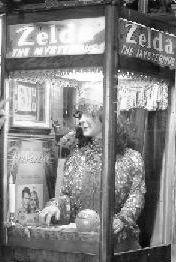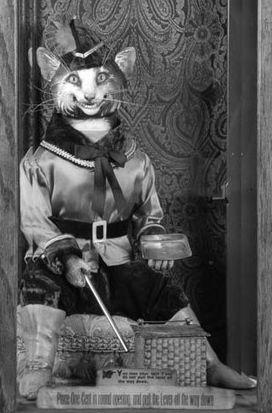Pro.ID21227 TitlePencils from the 19th Century Title链接http://10.20.2.8/oj/exercise/problem?problem_id=21227 AC0 Submit0 Ratio- 时间&空间限制描述Before "automaton" was a theoretic computer science concept, it meant "mechanical figure or contrivance constructed to act as if by its own motive power; robot." Examples include fortunetellers, as shown above, but could also describe a pencil seller, moving pencils from several baskets to a delivery trough.  On National Public Radio, the Sunday Weekend Edition program has a "Sunday Puzzle" segment. The show that aired on Sunday, 29 June 2008, had the following puzzle for listeners to respond to (by Thursday, 3 July, at noon through the NPR web site):
 For our purposes, we will expand on the problem, rather than just getting 20 pencils for 20 cents (which is shown in the sample output below). The input file will present a number of cases. For each case, give all solutions or print the text "No solution found". Solutions are to be ordered by increasing numbers of four-cent pencils. 输入Each line gives a value for N (2 <= N <= 256), and your program is to end when N = 0 (at most 32 problems). 输出Description Before "automaton" was a theoretic computer science concept, it meant "mechanical figure or contrivance constructed to act as if by its own motive power; robot." Examples include fortunetellers, as shown above, but could also describe a pencil seller, moving pencils from several baskets to a delivery trough.  On National Public Radio, the Sunday Weekend Edition program has a "Sunday Puzzle" segment. The show that aired on Sunday, 29 June 2008, had the following puzzle for listeners to respond to (by Thursday, 3 July, at noon through the NPR web site):
 For our purposes, we will expand on the problem, rather than just getting 20 pencils for 20 cents (which is shown in the sample output below). The input file will present a number of cases. For each case, give all solutions or print the text "No solution found". Solutions are to be ordered by increasing numbers of four-cent pencils. Input Each line gives a value for N (2 <= N <= 256), and your program is to end when N = 0 (at most 32 problems). Output The first line gives the instance, starting from 1, followed by a line giving the statement of the problem. Solutions are shown in the three-line format below followed by a blank line, or the single line "No solution found", followed by a blank line. Note that by the nature of the problem, once the number of four-cent pencils is determined, the numbers of half-cent and quarter-cent pencils are also determined. Case n: nn pencils for nn cents nn at four cents each nn at two for a penny nn at four for a penny Sample Input 10
20
40
0 Sample Output Case 1:
10 pencils for 10 cents
No solution found.
Case 2:
20 pencils for 20 cents
3 at four cents each
15 at two for a penny
2 at four for a penny
Case 3:
40 pencils for 40 cents
6 at four cents each
30 at two for a penny
4 at four for a penny
7 at four cents each
15 at two for a penny
18 at four for a penny Source 样例输入10
20
40
0 样例输出Case 1:
10 pencils for 10 cents
No solution found.
Case 2:
20 pencils for 20 cents
3 at four cents each
15 at two for a penny
2 at four for a penny
Case 3:
40 pencils for 40 cents
6 at four cents each
30 at two for a penny
4 at four for a penny
7 at four cents each
15 at two for a penny
18 at four for a penny 作者 |